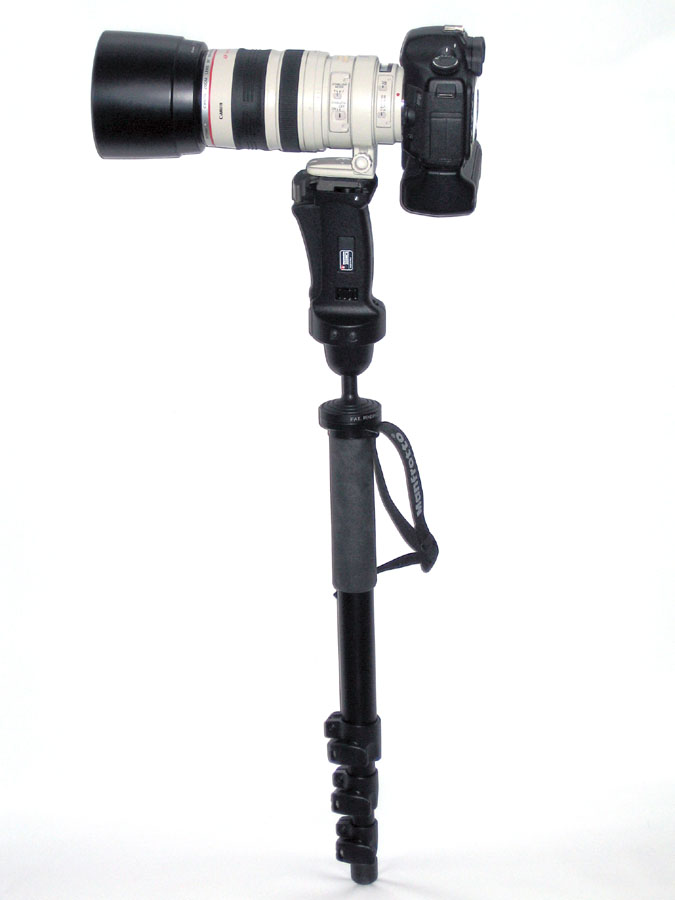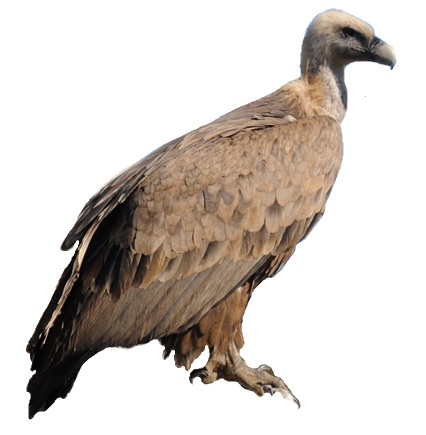|
Finnstick
{{Use dmy dates, date=July 2024 A finnstick is the name given by birdwatchers to a stick used to support a binoculars. The one end of the stick is steadily attached to the binocular while the other end rests against the belly. Finnsticks help to keep the binoculars steady especially when they are used for a prolonged time. In addition to keeping the image steady which allows for finer details of the object to be discerned, the use of the stick reduces muscle strain thus enabling longer viewing with less sore muscles afterwards. Some birdwatchers feel that the use of a finnstick does not markedly improve the viewer's ability to resolve detail, but rather improves viewing comfort and prevents premature fatigue. The finnstick is especially useful when watching migration (e.g. seabirds, raptors) when the horizon may be scanned literally for hours to find migrant birds. As the name implies the stick was invented by the Finns but is now also used in other countries, mainly in Europe. ... [...More Info...] [...Related Items...] OR: [Wikipedia] [Google] [Baidu] |
Monopod
A monopod, also called a unipod, is a single staff or pole used to help support cameras, binoculars, rifles or other precision instruments in the field. Camera and imaging use The monopod allows a still camera to be held steadier, allowing the photographer to take sharp pictures at slower shutter speeds, and/or with longer focal length lenses. In the case of video, it reduces camera shake, and therefore most of the resulting small random movements. Monopods are easier to transport and quicker to set up than conventional tripods, making them preferable for on-the-go (OTG) photography. An OTG photographer is not able to carry a heavy, bulky tripod around, and when they see a potential shot, there is no time to bother with setting up a complicated tripod. A simple monopod is easy to carry, easy to set up, and enables the photographer to take advantage of the situation they are presented with, all while providing camera support to capture a clear, sharp image. Examples of situa ... [...More Info...] [...Related Items...] OR: [Wikipedia] [Google] [Baidu] |
Birdwatchers
Birdwatching, or birding, is the observing of birds, either as a recreational activity or as a form of citizen science. A birdwatcher may observe by using their naked eye, by using a visual enhancement device such as binoculars or a telescope, by listening for bird sounds, watching public webcams, or by viewing smart bird feeder cameras. Most birdwatchers pursue this activity for recreational or social reasons, unlike ornithologists, who engage in the study of birds using formal scientific methods. Birding, birdwatching, and twitching The first recorded use of the term ''birdwatcher'' was in 1712 by William Oldsworth. The term ''birding'' was also used for the practice of ''fowling'' or hunting with firearms as in Shakespeare's '' The Merry Wives of Windsor'' (1602): "She laments sir... her husband goes this morning a-birding." The terms ''birding'' and ''birdwatching'' are today used by some interchangeably, although some participants prefer ''birding'', partly because ... [...More Info...] [...Related Items...] OR: [Wikipedia] [Google] [Baidu] |
Binoculars
Binoculars or field glasses are two refracting telescopes mounted side-by-side and aligned to point in the same direction, allowing the viewer to use both eyes (binocular vision) when viewing distant objects. Most binoculars are sized to be held using both hands, although sizes vary widely from opera glasses to large pedestal-mounted military models. Unlike a (monocular) telescope, binoculars give users a stereopsis, three-dimensional image: each eyepiece presents a slightly different image to each of the viewer's eyes and the parallax allows the visual cortex to generate an depth perception, impression of depth. Optical design evolution Galilean Almost from the invention of the telescope in the 17th century the advantages of mounting two of them side by side for binocular vision seems to have been explored. Most early binoculars used Galilean telescope, Galilean optics; that is, they used a convex lens, convex objective (optics), objective and a concave lens, concave eyepi ... [...More Info...] [...Related Items...] OR: [Wikipedia] [Google] [Baidu] |
Bird Migration
Bird migration is a seasonal movement of birds between breeding and wintering grounds that occurs twice a year. It is typically from north to south or from south to north. Animal migration, Migration is inherently risky, due to predation and mortality. The Arctic tern holds the long-distance migration record for birds, travelling between Arctic breeding grounds and the Antarctic each year. Some species of Procellariiformes, tubenoses, such as albatrosses, circle the Earth, flying over the southern oceans, while others such as Manx shearwaters migrate between their northern breeding grounds and the southern ocean. Shorter migrations are common, while longer ones are not. The shorter migrations include altitudinal migrations on mountains, including the Andes and Himalayas. The timing of migration seems to be controlled primarily by changes in day length. Migrating birds navigate using celestial cues from the Sun and stars, the Earth's magnetic field, and mental maps. Histor ... [...More Info...] [...Related Items...] OR: [Wikipedia] [Google] [Baidu] |
Seabirds
Seabirds (also known as marine birds) are birds that are adapted to life within the marine environment. While seabirds vary greatly in lifestyle, behaviour and physiology, they often exhibit striking convergent evolution, as the same environmental problems and feeding niches have resulted in similar adaptations. The first seabirds evolved in the Cretaceous period, while modern seabird families emerged in the Paleogene. Seabirds generally live longer, breed later and have fewer young than other birds, but they invest a great deal of time in their young. Most species nest in colonies, varying in size from a few dozen birds to millions. Many species are famous for undertaking long annual migrations, crossing the equator or circumnavigating the Earth in some cases. They feed both at the ocean's surface and below it, and even on each other. Seabirds can be highly pelagic, coastal, or in some cases spend a part of the year away from the sea entirely. Seabirds and humans hav ... [...More Info...] [...Related Items...] OR: [Wikipedia] [Google] [Baidu] |
Bird Of Prey
Birds of prey or predatory birds, also known as (although not the same as) raptors, are hypercarnivorous bird species that actively predation, hunt and feed on other vertebrates (mainly mammals, reptiles and smaller birds). In addition to speed and strength, these predators have bird vision, keen eyesight for detecting prey from a distance or during flight, strong feet with sharp talon (anatomy), talons for grasping or killing prey, and powerful, curved beaks for tearing off flesh. Although predatory birds primarily hunt live prey, many species (such as fish eagles, vultures and condors) also scavenge and eat carrion. Although the term "bird of prey" could theoretically be taken to include all birds that actively hunt and eat other animals, ornithologists typically use the narrower definition followed in this page, excluding many piscivorous predators such as storks, Crane (bird), cranes, herons, gulls, skuas, penguins, and kingfishers, as well as many primarily insectivorous bir ... [...More Info...] [...Related Items...] OR: [Wikipedia] [Google] [Baidu] |
Finns
Finns or Finnish people (, ) are a Baltic Finns, Baltic Finnic ethnic group native to Finland. Finns are traditionally divided into smaller regional groups that span several countries adjacent to Finland, both those who are native to these countries as well as those who have resettled. Some of these may be classified as separate ethnic groups, rather than subgroups of Finns. These include the Kvens and Forest Finns in Norway, the Tornedalians in Sweden, and the Ingrian Finns in Russia. Finnish language, Finnish, the language spoken by Finns, is closely related to other Balto-Finnic languages such as Estonian language, Estonian and Karelian language, Karelian. The Finnic languages are a subgroup of the larger Uralic languages, Uralic family of languages, which also includes Hungarian language, Hungarian. These languages are markedly different from most other languages spoken in Europe, which belong to the Indo-European languages, Indo-European family of languages. Native Finns c ... [...More Info...] [...Related Items...] OR: [Wikipedia] [Google] [Baidu] |
Hockey Stick
A hockey stick is a piece of sports equipment used by the players in all the forms of hockey to move the ball or puck (as appropriate to the type of hockey) either to push, pull, hit, strike, flick, steer, launch or stop the ball/Hockey puck, puck during play with the objective being to move the ball/puck around the playing area using the stick, and then trying to score. The word "stick" is a generic term for the equipment since different types of hockey require different forms and sizes to be effective. Field/ice/roller hockey all have a visually similar form of stick with a long shaft or handle which can be held with two hands, and a curved and flattened end; the end and curvature of these sticks are generally the most visible differences between the sticks for these sports. A modern underwater hockey stick bears little resemblance to any field/ice/roller hockey stick, since it is much smaller to enable it to be used exclusively in one hand, and it also has to be produced in one ... [...More Info...] [...Related Items...] OR: [Wikipedia] [Google] [Baidu] |







